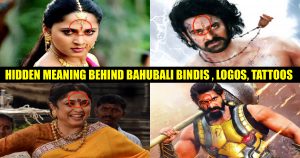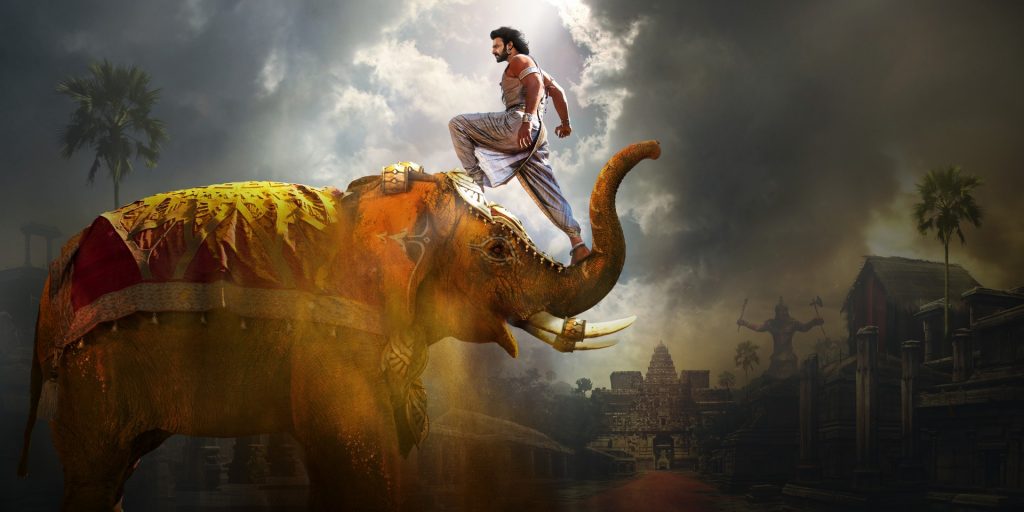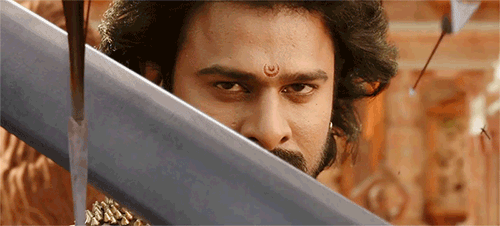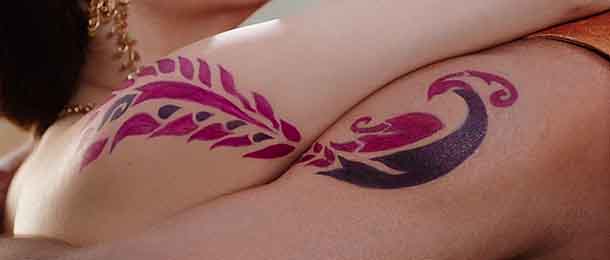
Here Are The Hidden Meanings Behind The Bindis, Tattoos and Logos Used By Characters Of Baahubali!
Content By – Deepak Janmanchi
SS Rajamouli’s Baahubali – The Conclusion has created a history in the Indian cinema and it has become a benchmark film at the worldwide box office, by collecting over Rs 1000 crore in just 10 days.

It has been receiving a lot of love and appreciation from not just the Indian audience but also from cine buffs from all around the world. It’s all credits goes to the maverick South Indian director who has already raised the bars of movie making quite amusingly and breathtakingly at the same time.
Yes, the entire nation is raving about SS Rajamouli’s creative mind and his perfect execution. This film has not just managed to break box office records but it has even won millions of hearts.

Now that the movie became the first Indian project to cross the Rs 1000 crore mark with nothing less spectacular than the Hollywood masterpieces. The story, the cast and the crew, everyone did their best to crest the movie. And country’s most awaited question ‘Why Kattappa Killed Baahubali?’ has been finally answered in a brilliant way.
But, still, there are many Lilliputian things which went unnoticed. Few of those ignored things are the Bindis and Logos used by characters of the movie.
These instances prove a fact that the film unit was very minute in detailing. We think that this article is a perfect reply for all those who say that Baahubali is only about VFX and graphics.
Disclaimer: These conclusions are drawn solely based on the personal intuition of a website. Everything may or may not be coincidental. If you’ve got a more reasonable theory, Kindly share it with us in the comments section.
Logo’s and Tattoo Analysis
1) Bijjaladeva – Trishulam:
As per the Hindu mythology, a Trident is said to a symbol of three gunas mentioned in Indian vedic philosophy namely Sattvika, Rajasika, and Tamasika.
Tamasika, One of the three above mentioned gunas, is the quality of imbalance, disorder, chaos, and anxiety which are perfectly possessed by Bijjaladeva.

2) Sivagami – Full Moon:
This full moon –Bindhuvu on Sivagami Devi’s forehead illustrates the dynamic nature/completeness of her. It also represents qualities like equality, bold, courageous, caring and powerful.
3) Amarendra Baahubali – Half Moon:
Half Moon is deemed as sacred by most of the existing religions. Amarendra is admired to the core of Maahishmati people’s heart because of his kind, balanced, and cool behaviour. Half Moon is said to depict the same above qualities.

If you remember, Kaala Bhairava (Magadheera) too used the same Bindi.
4) Devasena – Gender Equality:
Anushka Shetty has marvelously portrayed the challenging role of Devasena where she was seen in loggerheads with the most powerful character Sivagami.
And the bindi on Devasena’s forehead resembles a fusion of Male (♂) and Female (♀) gender symbols, it resembles the equality between the genders and also shows the women power. Feminism everywhere!
5) Bhallaladeva – Rising Sun:
As we all know Bhallaladeva, the antagonist of Baahubali fittingly satisfies the standards of a rising sun up to a certain extent. “The Sun is roughly middle-aged; it has not changed dramatically for more than four billion years, and will remain fairly stable for more than another five billion years”.
Because of his love failure with Devasena, Bhalla denies to marry any another girl.(As said by SS Rajamouli in one of the recent interviews). The only motive of Bhalla is- ‘Love is temporary, Revenge is eternal’! Bhala evergreen Bhalla bhalla!
6) Mahendra Baahubali – Serpent and Conch Shell:
Shivudu, an ardent devotee of Lord Shiva, has symbols of serpent and conch shell on his forehead and left shoulder respectively.
This symbolizes the love of Mahendra towards the almighty. In the initial days of script development, the maverick director thought of naming this character as ‘Nandi’ (Vehicle of Lord Shiva).
7) Kattappa – Loyal Slave:
We have already seen the loyalty of Kattappa towards the throne of Maahishmathi in many situations of this magnum opus story. Irrespective of prevailing conditions and consequences, Kattappa’s head should always be bowed down to the person sitting in Simhasanam. Tattoo on Kattappa’s forehead shows his slavery and helplessness.
8) Maahishmathi Logo:
A strict hierarchy is maintained in the kingdom of Maahishmathi. (Hierarchy pyramid can be seen in center of logo). It’s safeguarded from its enemies by armed professionals (Horses) on either of its sides. Jai Maahishmati! \m/
9) Kunthala King – Black mark
The leader of the kunthala’s is trying to avenge the wrongs done to his family. He is on a mission. The black mark signifies that. He is the avenger who has nothing left to lose.
10) Avanthika – Black spear tip
Avantika is a woman on a mission. Her purpose in life is to achieve the freedom of Devasena. She has turned herself into a weapon for this purpose. Here bindi signifies this.
11) Bhadra – Bull
Bull symbolizes authority, aggressiveness and dominance. It can also mean stubbornness.
12) The love tattoos
The most talked about the tattoos. This one is pretty plain and simple. Two bodies finally converging into one soul, which is the reason why they were placed as halves on Shivudu and Avanthika. The color combination used is also interesting.


Thanks for taking your time to read this.
What do you say about this? Do you have any your own views with regards this? let us know your views in the comments section below.
Disclaimer: These conclusions are drawn solely based on the personal intuition of a website. Everything may or may not be coincidental. If you’ve got a more reasonable theory, Kindly share it with us in the comments section.
H/t: Source Content By – Deepak Janmanchi